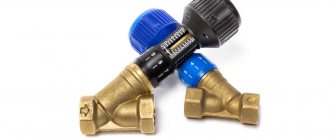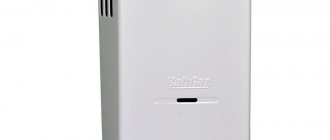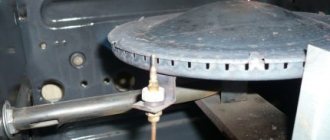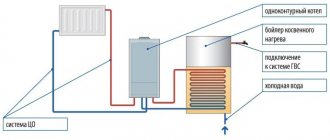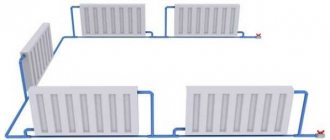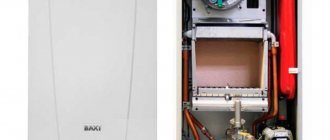Solenoid gas valves
Devices of this type belong to pipeline fittings and are used to distribute the gas flow and cut it off if necessary. They are widely used in both individual gas equipment and industrial ones. The device is controlled automatically under the influence of voltage.
Electromagnetic gas valves are installed at the inlet of the gas pipeline in front of the following consumers:
- boilers;
- geysers;
- gas ovens;
- automotive gas equipment;
- entering a pipe into a multi-storey building.
Most gas valves are of a closed design, meaning that when there is no voltage, the valve closes the pipe.
Purpose and features
Magnetic choke is used quite widely both in industry and in everyday life. The Lovato magnetic gas valve of the VN series is installed in everyday life, first of all, on pipelines supplying natural gas to premises (for example, dispensers).
The Lovato BH Series Solenoid Valve on any gas line essentially works like a regular tap that can shut off the gas supply at the touch of a button. In addition, the magnetic assembly increases the safety of using gas equipment (boilers, dispensers, ovens).
If a gas leak occurs, the magnetic choke can quickly block the gas supply to the room.
The Lovato BH series solenoid valve is used for gas stoves or water heaters, industry and automotive systems, and various workshops.
In addition, the gas solenoid valve of the HBO performs an additional function of cleaning the fuel from the presence of harmful impurities in it.
Device
The Lovato BH series magnetic gas valve consists of a seat and a shutter. There are two options for its design: in the form of a plate or a piston. The type of valve depends on the configuration and model of the valve.
The shutter can open and shut off the gas supply by performing reciprocating movements. It is installed on a core, which is connected to an electromagnet.
A magnetic mechanism is installed on the outside of the mechanism (at the top of the case).
The operating principle of the Lovato BH series gas solenoid valve is that when electric current is applied to a magnetic element, a magnetic field is formed.
The electromagnet, being under the influence of the field, begins to be drawn into the coil. This process creates the direction in which the shutter moves.
Two forces act on the electromagnetic unit during operation:
- Return spring resistance;
- A magnetic field that depends on electric current.
If a high voltage is applied, the magnetic field increases and overcomes the resistance of the spring. By adjusting the current, you can regulate the opening of the solenoid valve, which leads to control of the gas supply to the boiler, column or furnace.
When the mechanism is disconnected from power, it returns to the position determined by its design.
Construction of gas solenoid valves
Solenoid type gas valves consist of electrical and mechanical parts. The electrical system is used to control the system, while the mechanical system is the actuator. The entire circuitry of the device is located in the housing. The main operating components are the so-called seat and bolt. The seat is a hole through which the gas flow passes and is closed by a valve. The latter is designed like a plate or piston. The shutter is mounted on a rod, which is part of the electromagnetic system.
The electromagnetic system consists of a coil within which a core moves. It is connected to the bolt rod. The electromagnet itself has its own plastic housing and is located outside on top of the valve body. The operation of the electromagnet is counteracted by a return spring.
Solenoid gas valves operate on the following principle. In the initial state, when there is no supply voltage at the electromagnet terminals, the return spring holds the gate in a certain position. This position often corresponds to a closed channel in the valve. As soon as power appears, under the influence of magnetic force, the shutter core is retracted, overcoming the force of the return spring, and the shutter opens the channel. Some valves are brought into operating position by manually cocking (opening) the shutter. By using the current supplied to the electromagnet, the magnitude of the magnetic flux of the electromagnet can be adjusted. In this way, the operation of the valve is controlled by not opening it completely, thereby regulating the gas flow.
What does a solenoid valve consist of?
Depending on the design and manufacturer, the gas valve includes:
- Core with gasket;
- Valve return spring;
- Valve with gasket;
- Coil with copper winding;
- Permanent magnet;
- Gasket and seals;
- Filter;
- And also the body.
A gas valve is usually installed in front of, or more precisely, directly into the gearbox housing, this is necessary for more convenient shutdown of the gas fuel supply. The switch itself is located in the cabin and operates in three modes: “gas”, “gasoline” and “nothing”. After turning off the ignition, the valve is in the closed position; some gas systems are configured in such a way that the gas supply stops immediately after the spark disappears.
Types of Gas Valves
Solenoid gas valves come in different configurations and internal structures, but they are all divided into:
- Normally closed (NC). That is, if there is no voltage, the gas is shut off. These are basically emergency type valves.
- Opened in normal condition (NO). Gas flows freely if there is no voltage on the coil, and is closed when a control signal is applied.
- Universal type. In such devices, it is possible to switch the position of the shutter, which can be either open or closed, in the absence of power to the electromagnet coil.
According to the principle of actuating the shutter, the electromagnetic gas shut-off valve can be of indirect and direct locking methods. In the first case, the electromagnet core is helped by the pressure of the working medium in the event of the shutter being activated. In the second, the shutter is moved only by the electromagnetic force acting on the rod.
Gas valves can perform not only a protective function, but also a distribution function. In this sense, there are devices for different numbers of moves:
- Two way valves. These are the most common models of safety valves, having one inlet and one outlet. Their main function is to block the channel in any possible emergency situations.
- Three way valves. Control valves provide the ability to direct the flow of gas from an inlet between two outlets.
- Four-way valves can be integrated into various complex systems where there is a need to control energy flows through three different channels.
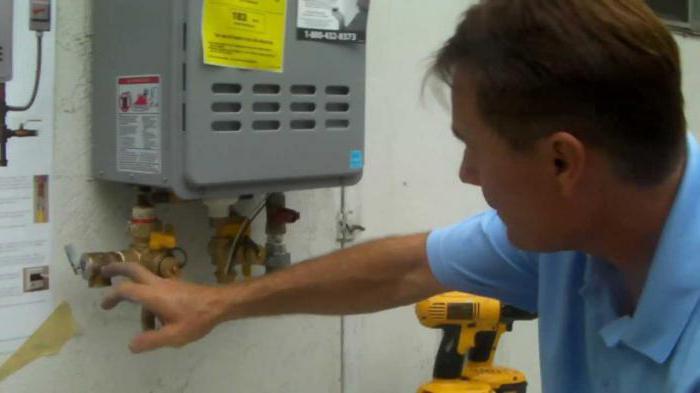
In addition to the above features of gas valve modifications, each specific device may have an original design that differs from the standard. Thus, some valves have internals specially manufactured to operate in aggressive conditions.
Varieties
Solenoid valves are characterized by a variety of design solutions, so they are classified according to many parameters.
The valves are classified according to the opening method:
- normally open (NO); they remain in the open position when the power supply is interrupted, thereby ensuring conditions for the passage of the maximum volume of flow;
- normally closed (NC): in the absence of current, the solenoid gas shut-off valve
NC is closed, thereby completely blocking the flow; - universal: such models can remain in the open or closed position when the power supply is cut off.
Modified modern models provide the ability to reconfigure the pilot position of the membrane. Devices with a NO plunger position can be converted to NC type valves.
Depending on the type of design, the valves can have a conventional or explosion-proof design. The latter are recommended for installation at facilities that have high explosion and fire safety requirements (chemical, petrochemical, gas and other industrial enterprises).
Solenoid valves for gas
It is also customary to classify according to control features into devices of direct action and those driven by piston (diaphragm) force.
- Direct-acting valves have a simple design, are characterized by fast operation and high reliability. In such models there is no pilot channel. Opening occurs instantly when the membrane is lifted. In the absence of a magnetic field, the spring-loaded plunger lowers. Models of this type do not require a pressure differential to operate.
- Models with piston (diaphragm) force are equipped with two spools. The function of the main one is to close the main hole; the control spool is responsible for the operation of the relief hole, which serves to relieve pressure from the area above the membrane. Due to pressure compensation, the main spool rises and the main passage opens.
Based on the number of pipe connections, solenoid valves are classified into two-, three- and four-way valves. Two way valves are either NC or NC type and have one inlet and one outlet pipe connection. Three-way valves have three connections and two flow sections. They come in NO, NC and universal types, and are in demand for organizing the operation of automatic drives, distribution valves, cylinders with one-way vacuum action, and alternating pressure supply. Four-way ones are equipped with four or five pipe connections. One connection is for pressure, one or two for vacuum, two for the cylinder. Such models are necessary for the operation of automatic drives and double-acting cylinders.
The list of pipeline fittings includes a mechanism such as a solenoid valve for gas. This is a device that works for distribution and regulation in gas pipelines, boilers, geysers and other gas supply systems.
The solenoid valve for gas has one significant feature: the magnetic valve is controlled remotely by supplying an electric current.
The created magnetic pulse provokes a displacement of the electromagnet, which in turn initiates the movement of the shutter.
Thermal shut-off valve on a gas pipeline: purpose, device and types + installation requirements
Gas is not only an affordable fuel, but also an extremely explosive substance. Therefore, it is so important that every gasified facility meets safety requirements. Do you agree? After all, if a high temperature rises on a section of a gas pipeline (when something catches fire) and the gas ignition limit is reached, then an explosion is inevitable.
A thermal shut-off valve on the gas pipeline will help prevent this development of the situation. This device cuts off the gas supply in case of fire, which means it eliminates the risk of explosion. Next, we will tell you how such valves are designed, what types there are, and how to install them correctly on gasified objects.
Why are thermal shut-off valves needed?
Thermal shut-off valves are devices that are gas shut-off valves. They automatically shut off the gas pipeline leading to all gas-powered appliances.
All “stubs” are marked as KTZ with a certain set of numbers after the letters. The second number indicates the diameter of the gas pipe for which this mechanism may be suitable.
Purpose of the thermal shut-off valve
The main purpose of the KTZ is to shut off the gas supply to the equipment in the event of a fire. This not only helps protect against explosions, but also prevents the fire area from doubling or more.
Repair of gas equipment in private houses and apartments
All our craftsmen are trained at the required frequency in Mosoblgaz, as well as in foreign and domestic manufacturing companies.
Each employee is a certified specialist who knows how to work with both our and imported equipment. Gas equipment repairs are carried out exclusively by specialists with all the necessary approvals. This allows you to maintain the factory warranty - a plus from cooperation with our company. When adjusting the balance of gas, water and air, we use specialized devices that not every master can boast of. Thanks to them, the equipment works correctly, stably, durablely and economically. You can be sure that the repair of gas equipment will always be performed at a high and professional level. Over many years of work, there has never been a single problem that our engineers could not fix. If it is necessary to purchase components, we will definitely take it upon ourselves and carry it out in a short time, since we have long established good partnerships with suppliers and manufacturers. Gas equipment repair is really convenient and inexpensive. Thousands of residents of the Moscow region who have chosen us to help solve problems have already been able to verify this.
KTZ device and principle of operation
The valve design includes a steel body with a threaded connection, a fusible insert, a spring element located inside the body, and a plate- or ball-shaped shutter. It is this gate element (indicated last) that serves as one of the main ones, since it closes the channel if necessary.
In the photo below you can see two different types of thermal shut-off valves and the intricacies of their design.
Now let's talk about how the thermal shutoff valve works.
When the air temperature in the room is normal and there is no threat of explosion (ignition, fire, etc.), the shut-off part of the valve is cocked and is held in place by the fusible insert. If the ambient temperature in the building increases, reaching 80-100 °C, then this entails the expansion of the insert we are talking about. This releases the shut-off mechanism, which in turn, due to the action of the spring, blocks gas access to the equipment.
The tightness of the actuated valve is ensured by the mating of the shutter cones and the valve seat, in a word, like “metal to metal”.
Such shut-off devices can be connected to the pipeline using different types of connections. This can be a flange, coupling (threaded) or wafer mount. Below we will look at what types of thermal shut-off valves there are.
Types and differences
There is a main division of all models of electromagnetic valves into three groups:
- Normally open (NO). When the voltage is turned off, devices in this group remain in the open position and ensure free flow of gas.
- Normally closed (NC). Solenoid valves without electrical current are in a closed position and block the free flow of gas in the gas system.
- Universal. This type of gas valve can be in either a closed or open state when the voltage is turned off.
It is worth noting that electromagnetic gas valves can also be divided according to the principle of shutter movement:
- Direct action. This assumes that the shutter is only activated when the core moves.
- Indirect action. When the shutter moves not only under the influence of the core, but also under the influence of gas. It is beneficial to buy an electromagnetic valve for gas of this type if a large flow is expected, because it saves the effort of the system.
According to the number of moves there are:
- Two-way solenoid valves. They have only two holes: inlet and outlet. This type of device is best used when you only need to supply or shut off gas to the system.
- Three way valves. They have three holes: one inlet and two outlets. Its advantage is that it is possible to redirect the gas flow through the system.
- Four-way solenoid valves. They have four holes: one inlet and three outlets. The advantage here is not only the ability to redistribute the gas flow, but also to connect to additional systems.
Before you buy a Lovato BH series magnetic gas valve, it is worth discussing where this device will be used and what characteristics it should have.
You should pay attention to the following conditions:
- Electrical maintenance. It is best to choose models with additional manual adjustment, or intrinsically safe ones with low power.
- Pipeline pressure. Do not select a valve with a pressure rating that exceeds the pipeline pressure. This may cause damage to the mechanism.
- Environment. You should check the valve specifications and make sure that the product can be operated under existing conditions. This is relevant when the room where the mechanism will be installed is expected to have high humidity, vibration, high (or vice versa, low) temperature, direct sunlight or any other parameters different from the norm.
- Required voltage. It is worth checking the power source for stable voltage. Uses a 220V gas solenoid valve, and if the voltage is lower, it will cause the mechanism to not be able to open and close normally. And with increased voltage, the device will overheat. This is also relevant on gas equipment of cars - then they install a 12 volt gas solenoid valve.
The price of a gas solenoid valve will vary depending on the type, size and application.
An electromagnetic valve for a gas water heater depends on the model of the water heater) will cost from $4 to $10. A Lovato magnetic gas valve for a car costs from $10 to $15.
Devices that are not used for household purposes are significantly more expensive. Let's also give a couple of examples.
A gas solenoid valve of the KGEZ type, depending on the configuration, will cost about $20-25.
A VN series solenoid valve for a gas gun will cost $43.
Product overview (video)
Installation nuances
The Lovato BH series solenoid valve is installed for rooms after the gas valve. It is recommended to install a filter in front of the valve.
To correctly install the mechanism, it is necessary to place the arrow on the body in the direction of the gas flow.
The column assembly must be positioned either horizontally or vertically.
The connection is made using threads (when small-diameter models are used) or using flanges for pipes with a large cross-section.
Types of thermal shut-off valves
There are currently only two types of thermal shut-off valves on the market. From the descriptions above it is clear that these are coupling valves and flanged valves .
Each type has its own size range. The main difference between one type and another is the scope of application. That is, threaded devices are used more often for domestic purposes, and flanged devices are used in industries.
This is explained by the conditional pressure indicators that the locking mechanisms can withstand during operation:
- coupling valves – 0.6 MPa;
- flanged valves – 1.6 MPa.
Both types have the same design including a spring, a locking element, a fusible insert and other elements. However, the difference is visible externally in the diameter of the passage hole.
If we talk about the scope of application in more detail, we should highlight the following places and industries depending on the type of KTZ:
- Threaded valves are used when installing gas pipelines in residential buildings, boiler houses, and industrial facilities for various purposes.
- KTP with a flange connection are used when installing gas pipelines in large boiler houses and large industrial facilities.
The second type of valve is in greater demand in the industrial sector due to the large diameter of the bore. If for threaded valves it varies between 15-50 millimeters, then for flanged valves this figure can be from 50 to 200 millimeters.
The connection between the inlet flange of the thermal shut-off valve and the mating flange of the pipeline must be sealed with a special heat-resistant gasket. It can withstand up to 900 °C in case of fire.
The gaskets in question are made of a special heat-resistant material. The composition includes reinforced graphite in a foil shell, as well as stainless steel from which this foil is made.
Basic installation rules
The quality of subsequent operation of the valve depends on the installation process. Therefore, it is important to follow the rules when installing a thermal shut-off valve.
Next, we will consider the basic rules and regulations for installing KTP on a gas pipeline:
- Thermal locking devices for threaded connections should be installed only on lines with a pressure of no more than 0.6 MPa. Flange-type valves can and should be used on pipelines with gas pressure from 0.6 to 1.6 MPa.
- The flow capacity of the gas line must match the flow capacity of the valve itself.
- Installation is permitted only indoors to protect fittings that are not designed for high heat.
- It is not allowed to install KTP where adjacent elements raise the ambient temperature to 52 °C or higher.
- Once the installation process is complete, it is important to check the valve for leaks.
- The installed valve must be located in a place accessible to humans (for inspection and maintenance).
- The valve should not be exposed to various influences.
It should also be borne in mind that when transporting thermal shut-off valves, automatic operation of the mechanism may occur. Therefore, when choosing a device, it is important to check the mechanism.
If the gas distribution is complex, and there are several fuel consumers, and the objects are located in different parts of the building, then you will need to install valves on each branch.
And although these shut-off valves undergo thorough and numerous tests, and are also certified and approved for their intended use, every rule for their installation must be followed.
Conclusions and useful video on the topic
What you need to know about KTZ for household use:
Every day, fires claim the lives of thousands of people around the world. Gas explosions during fires are no less dangerous. If each user approached fire safety rules more responsibly, then perhaps there would be fewer disastrous outcomes. Thermal shut-off valves can be considered equipment that greatly improves the safety of your home. But for this it is important to follow every rule for their operation and installation, which we described in this article.
Do you still have questions about the design or installation rules of a thermal shut-off valve? Or would you like to supplement the material with useful information? Write your comments in the comments block, ask your questions to our experts, and take part in discussions.
source
Valve for a gas pipe in an apartment: features of selection, installation and maintenance standards
Regular gas explosions in apartments cause concern for owners, residents and utility services. Installing a leak control system partially solves this problem: it helps prevent fire, explosion, and poisoning. The design, in addition to the alarm, must include a valve on the gas pipe, which shuts off the fuel supply if dangerous situations arise.
In this publication, we will get acquainted with the requirements of gas services for integrating such a device into the main line. Let's find out what types of valves can be connected to gas alarms and what standards they must comply with. Plus, we’ll understand the nuances of installing the device on a pipe.
Building rules and regulations
According to SP 60.13330.2016, equipping residential premises with gas sensors is not mandatory and is carried out at the request of the customer. But this applies only to already constructed buildings.
In accordance with clause 6.5.7 of SP 60.13330.2016, a gas alarm is required in new, reconstructed, or subject to major overhaul residential buildings, where the operation of boilers, water heaters, stoves and other equipment is expected.
The actuator of such a sensor is a high-speed solenoid valve - a cut-off valve that blocks the gas supply. It should be installed at the gas inlet into the room and interlocked with the alarm device so that when the latter gives a signal, the valve immediately stops supplying blue fuel.
At the planning stage, the premises are surveyed. Areas in which gas may accumulate (depressions, niches) deserve close attention. The presence of “dead zones” should not be allowed.
In addition to reworking the internal wiring, if necessary, they disassemble, assemble or replace kitchen furniture, appliances, as well as installation:
- hidden electrical wiring;
- alarm information systems;
- forced ventilation.
All work is carried out according to the project, which requires preparatory actions. First you need to contact your local gas service.
The approval instructions look like this:
- Drawing up an application according to the sample indicating the desired changes in the highway. The document serves as the basis for a visit by a specialist to the place where the equipment is installed.
- Already on site, a representative of the organization inspects everything, checks it, makes calculations in accordance with the standards, taking into account the applicant’s plan.
- An estimate is calculated and a plan is prepared.
- The plan and estimate are agreed upon: the document is handed over to the applicant for review and consent to installation.
- Carrying out payment in case of agreement with the proposed project.
If the estimate and/or plan does not suit the customer, this is discussed with the foreman, a compromise solution is found and the project is finalized.
Adjusting the solenoid valves
If during ignition there is no characteristic click of the gas valves opening, then you need to restore the contact of the wires on the valves and replace them if a fault is found.
With proper adjustment of the solenoid valves, gasoline should not be consumed when running on gas. If this does happen, then you need to check and restore the tightness of the gasoline valve.
If the solenoid valve is clogged (and this happens periodically because it cleans the gas of solid impurities), tighten the valve on the gas cylinder. Disconnect the gas line from the gas valve. Unscrew the tightening bolts or screws securing the filter cover, remove the cap carefully (pay attention to the sealing gasket!). Then remove the filter. Disassemble, dip in solvent (646, 647, etc.), blow with compressed air.
Multifunctional solenoid valves for gas
belong to the category of pipeline fittings. The devices are used to distribute, regulate, and cut off the working medium in boilers, geysers, pipelines and other gas equipment. The magnetic valve of the valve is controlled remotely, in automatic mode, this is its advantageous feature. The relay turns on or cuts off the electrical current to the coil, the plunger rises or falls, opening or closing the hole, thereby controlling the gas flow.
The price for a solenoid gas valve is higher than for similar mechanical devices. The costs of its acquisition are recouped due to the ability to operate technologically in optimal mode with minimal fuel consumption. In addition, the devices are recommended for installation, since they greatly increase the safety of operation of boilers, water heaters, and furnaces. In the event of a fuel leak, the magnetic choke will immediately shut off the gas supply, thereby preventing dangers associated with the concentration of harmful substances in the room.
Multi-purpose fittings are used to service domestic and industrial installations, and automotive systems.
Choosing equipment for an apartment
All elements of the system must be equipped with permits, a Russian passport, a certificate and/or a declaration of conformity with the technical regulations of the Customs Union, which allow their use on the territory of the Russian Federation.
Purchasing a special set is preferable to purchasing devices separately. In the first case, the elements of the kit are already coordinated with each other in terms of parameters, adapted for work in domestic conditions, and supplied with operating instructions.
There are models of domestic and imported production on the market. Replacing and repairing the former is cheaper and easier to do.
Installing the device on a pipe
Work on introducing a shut-off valve into the system is carried out only by a master - a gas service employee or an individual entrepreneur. It is mandatory that he has a special permit to perform this type of work and permits.
When choosing a location for installation, it is necessary to take into account ease of access to manual cocking.
- in front of the gas meter, if its design does not provide for the use of a cut-off switch at the inlet to turn it off;
- in front of a household gas appliance - stove, water heater, boiler;
- at the main entrance into the room, if it has a gas meter with a disconnecting device at a distance of at least 10 m from the entry point.
To ensure that the valve is installed quickly and efficiently, you should call the technicians in advance and find out if additional consumables will be needed. If yes, it is advisable to buy them in advance. The space where the work will be carried out must be cleared, and kitchen surfaces and appliances must be covered with tarpaulin, burlap or other materials that are not prone to combustion.
When performing installation, specialists must strictly adhere to the requirements of standards and regulatory documents. It is also recommended to follow the manufacturer's data sheets and instructions for the devices.
Design efficiency
Installing an alarm and gas valve in an apartment does not guarantee 100% protection against leaks or unauthorized interference in the operation of devices. The system, depending on the installation location, turns off only a separate section of the gas pipeline or device.
But a leak is also possible on a common house line, so stopping the supply of fuel to one device cannot be called effective. False confidence in complete safety can provoke much more negative consequences. We recommend looking at information about how gas explodes in an apartment.
It is only truly effective to equip all apartments and premises in the building with a monitoring system. In this case, if there is a gas leak, the supply will stop throughout the entire pipeline.
How does a gas valve work?
Most gas units have a SIT valve. It includes the following elements:
- gas pressure measuring port at the valve outlet;
- adjusting screw for minimum and adjusting nut for maximum fuel consumption;
- lid;
- inlet pressure measuring port.
The gas boiler valve consists of a shut-off and modulation coil. When a voltage of 220 V is applied to the shut-off valve, a minimum volume of gas is supplied to the burner in accordance with the factory settings. The voltage is then transferred to the modulation coil. The processor, depending on the operating mode (power), supplies voltage with different modulation frequencies, regulating the amount of gas passing per unit time.
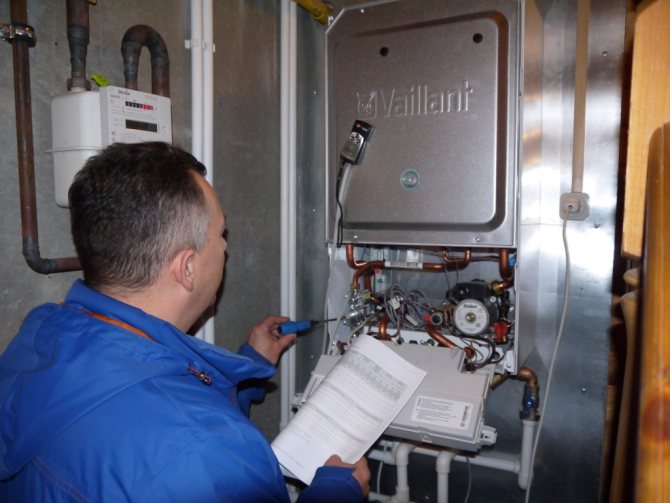
To set the boiler gas valve to minimum power, you will need a differential pressure gauge, a wrench and a screwdriver. The setup process includes the following steps:
- Remove the protective cap covering the differential valve screws.
- Open the fitting to measure the gas pressure supplied to the burner - turn the locking screw 1.5-2 turns counterclockwise.
- Connect the pressure gauge hose to the inlet fitting.
- Turn on the heating mode and disconnect one wire of the modulation coil - this is necessary so that the valve supplies gas to the burner to a minimum, which will correspond to the minimum power of the unit.
- According to the pressure gauge readings, set the minimum gas pressure on the burner. To do this, rotate the internal screw located under the protective cap. At the same time, fix the outer nut.
The dynamic fuel pressure at the gas valve inlet ranges from 1.4 to 2.4 kPa. If measurements show that the pressure is outside the specified limits, it is necessary to call gas specialists.
In the factory power range, there is no need to manually reset the gas valve. This is required in order to transfer the unit to a power lower or higher than the values stated in the instructions. Often, valve adjustment is needed if the performance of the device does not correspond to the heated area of the house or apartment.
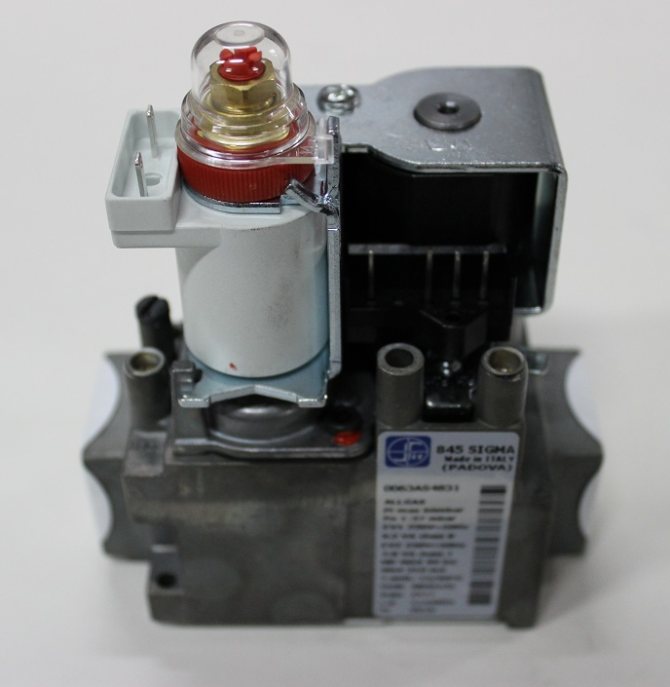
Why the gas boiler turns off - reasons and methods for solving problems
Find out here how to make a gas boiler more economical?
Setting the gas valve when the boiler is “clocked”
A problem such as “clocking” of a gas boiler can be solved by adjusting the gas valve. It usually occurs if the power of the unit significantly exceeds that required for a given area.
To prevent the device from “clocking” in heating mode, it is necessary to reduce the outlet pressure. This is done by turning the adjusting screw counterclockwise.
To stop “clocking” in DHW mode, reduce the maximum pressure. This can be solved by rotating the adjusting nut counterclockwise.
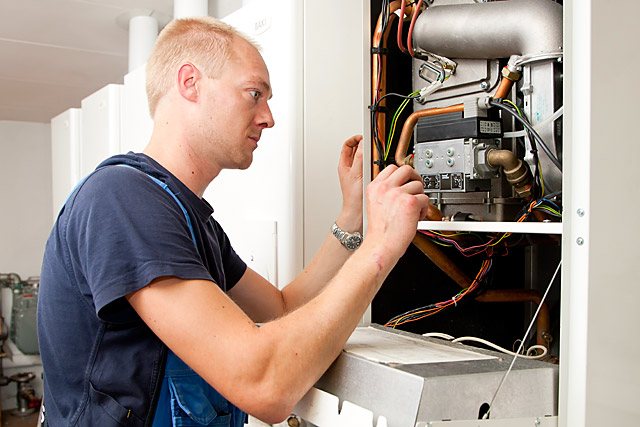
However, in more modern models, “clocking” is eliminated automatically. For example, setting the gas valve of the Buderus boiler is done by blocking the cycles:
- hold the button with the wrench for 5 seconds;
- select the duration of intervals from 0 to 15 minutes using the arrow buttons.
It is recommended that adjustments of this kind be carried out only by service center specialists, especially if the boiler is under warranty. Otherwise, if you damage the valve, the company will void the warranty and you will have to buy a new part.
Each gas boiler needs several key components that will monitor the unit for its proper operation. In case of any deviations, various components are triggered and the installation simply stops functioning. But at the same time, you need to understand how to check the solenoid valve of a gas boiler, thermocouple or any other component. After all, knowing about the malfunction, in most cases you can remove it yourself.


